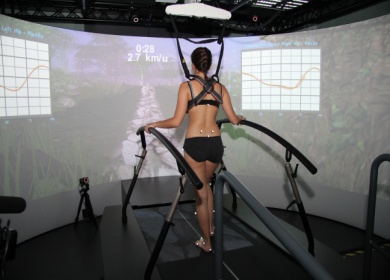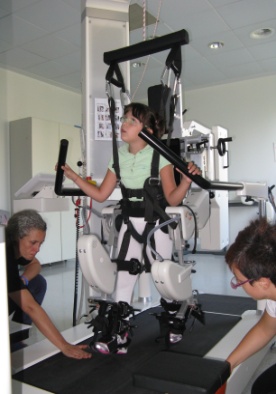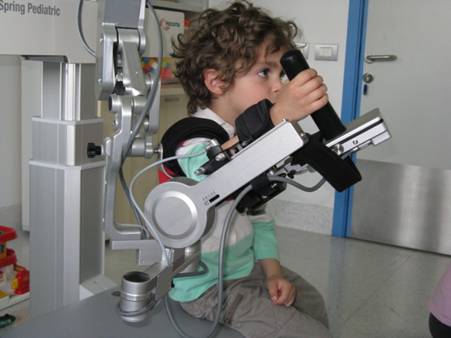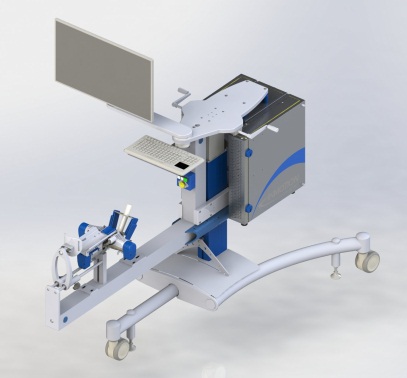Area 4 – Applied Technologies
Head: Ing. Gianluigi Reni
The “Applied Technologies” area pushes innovative - cutting the edge - instruments to clinical research, develops mathematical solutions to clinical demands and supports the technical needs of the other 3 research areas of the center. The area is organized in two functional sub-groups: the CESNE and the Bioengineering Laboratory.
CESNE-Neuroimaging Lab
CESNE, the Neuroimaging lab of the Institute, is a multidisciplinary group where Medical Doctors and Engineers work side by side integrating the clinical expertise of the first with the technical competences of the latter. The hearth of the unit is a 3T Magnetic Resonance (MR) scanner dedicated both to clinical and research activities, mainly on pediatric subjects, including children affected by rare neurological disorders, genetic abnormalities, movement disorders or acquired lesions (i.e. traumas). The main goal is the identification of diagnostic biomarkers and indices to characterize cerebral effects of neurological disorders, and to evaluate the effectiveness of rehabilitation treatments in terms of functional and structural brain modifications. Neuro-pathological mechanisms and alterations responsible for some neurological disorders, like cerebral malformations, are investigated combining advanced MR imaging with clinical and genetic data.
Thanks to the membership of E. Medea Institute in “Imago7” Consortium, CESNE participates to research projects on the first and unique ultra-high field (7T) magnet installed in Italy, near Pisa.
It is also one of the leading members of the “Colibrì” project, a national imaging database of rare pediatric neurologic disorders aimed at promoting better diagnosis, research and networking among experts in the field.
The network of collaborations of CESNE includes both national and international clinical and research Institution:
-
John Hopkins Children’s Center, Baltimore, USA;
-
National Institute of Health (NIH), Bethesda, USA;
-
University Medical Center, Utrecht, The Netherlands;
-
University of Padua, Padua, Italy;
-
Politecnico di Milano, Milan, Italy;
-
University of Verona, Verona, Italy;
-
Buzzi Hospital, Milan, Italy;
-
Ospedale Maggiore, Milan, Italy;
-
Mendel Institute, “Casa Sollievo della Sofferenza”, Rome, Italy
The main research topics of the group are:
-
Morphological analysis:
-
Structural analysis:
-
algorithms and pipelines for the quantification of diffusion weighted sequences (DTI and non-gaussian techniques);
-
iron quantification from Susceptibility Weighted Imaging;
-
evaluation of the effects of rehabilitation treatments on brain structure;
-
Functional analysis:
-
effects of acquired lesions or genetic pathologies on the brain activity, using both task fMRI and resting state;
-
evaluation of rehabilitation treatments in terms of brain activity.
-
Muscular imaging:
Bioengineering Laboratory
The Bioengineering Laboratory encompasses skills from a wide range of engineering fields, and is aimed to the development, adaptation and application of the latest technological developments to medicine. IRCCS E. Medea has always been cutting the edge of treatment and rehabilitation of pediatric patients. The group further corroborates the vocation of the institute, developing new ad-hoc designed medical equipment (hardware and software) for diagnosis, rehabilitation, and daily assistance. Furthermore, the Lab has robots and a fully immersive virtual reality system available for treatment and recovery of motor and cognitive functions.
Additional areas of interest of the group are Signal Processing, including research and development of methodologies for the analysis of bioelectrical signals, as well as Medical Informatics, developing informatics systems for the hospital and specific software required from other research areas of the center.
Throughout all its research and production activities, the group can rely on collaboration of many partners:
-
Politecnico di Milano, Milan, Italy
-
CNR-IBFM (National Council of Research – Bioimaging and molecular physiology institute), Segrate, Italia
-
CNR- ITIA (National Council of Research – Industrial and automation technologies institute), Milano, Italia
-
CNR- ICMATE (National Council of Research – Energy and interphase institute), Lecco, Italia
-
CNR- IPCB (National Council of Research – Institute for Polymers, Composites and Biomaterials)
-
CNR- IFN (National Council of Research – photonics and nanotechnologies institute)
-
CNR- INO (National Council of Research – National Institute of Optics)
-
University of Southern California, USA
-
Univerlecco, Lecco, Italy
-
University of Pavia, Pavia, Italy
-
Scuola Superiore S. Anna, Pisa, Italy
-
University of Milan, Milan, Italy
-
Università Cattolica di Milano, Milan, Italy
The main research topics / working areas of this group are:
-
Prototyping devices and software dedicated to improving quality of life of patients and to rehabilitating pediatric patients, with focus on infants and children;
-
Development and definition of rehabilitation protocols based on mechatronic robots and virtual reality;
-
Identification of biomarkers for the screening of children with CNS disorders;
-
Clinical experimentation of non-conforming medical devices (e.g. exoskeletons or wearable objects for the domiciliary treatment and monitoring)
-
Technology transfer
-
Creation of databases for the long term storage of data collected from healthy controls and pediatric patients, including clinical and genetics data and images.
 Grail (Gait Real-time Analysis Interactive Lab): virtual reality and mechatronic platform for the analysis and rehabilitation of movement. Grail (Gait Real-time Analysis Interactive Lab): virtual reality and mechatronic platform for the analysis and rehabilitation of movement.
 Lokomat: active exoskeleton for the gait rehabilitation. Lokomat: active exoskeleton for the gait rehabilitation.
 ARMEO: a passive exoskeleton for the upper limb rehabilitation ARMEO: a passive exoskeleton for the upper limb rehabilitation
 In Motion wrist: for the rehabilitation of hand and wrist In Motion wrist: for the rehabilitation of hand and wrist
31-Gen-2018
- © I.R.C.C.S. Medea |

